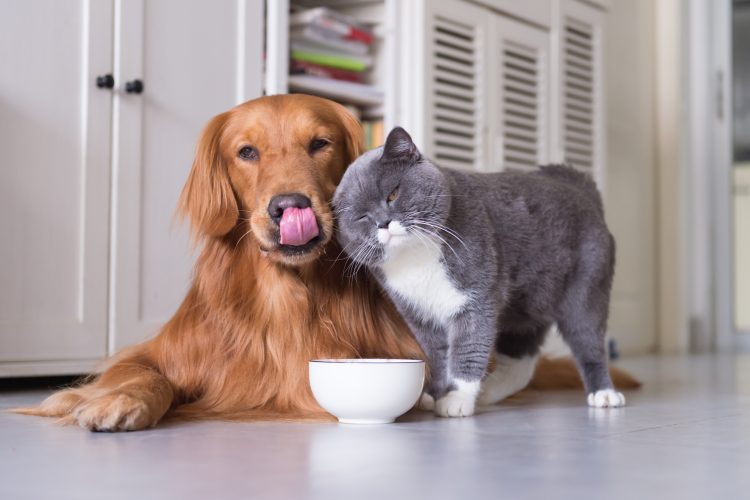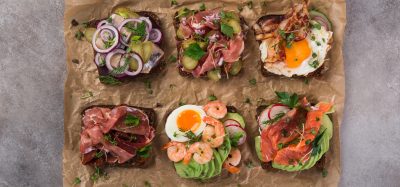Our responsibility to the future of pet care
- Like
- Digg
- Del
- Tumblr
- VKontakte
- Buffer
- Love This
- Odnoklassniki
- Meneame
- Blogger
- Amazon
- Yahoo Mail
- Gmail
- AOL
- Newsvine
- HackerNews
- Evernote
- MySpace
- Mail.ru
- Viadeo
- Line
- Comments
- Yummly
- SMS
- Viber
- Telegram
- Subscribe
- Skype
- Facebook Messenger
- Kakao
- LiveJournal
- Yammer
- Edgar
- Fintel
- Mix
- Instapaper
- Copy Link
Posted: 13 December 2023 | Dr Elise Malandain | No comments yet
Elise Malandain discusses shifting pet parenting trends and the need for sustainable nutrition, and digital advancements, reflecting a deep bond between pets and owners.


By Elise Malandain from Mars Pet Nutrition
Nothing compares to the joy of coming home to a loyal companion. The love of a pet is more than company – it’s been scientifically proven to reduce stress, improve wellbeing and get us out for regular walks. This strong connection between people and their pets has led to a marked change in how people view them.
These pet parents are placing more value on how they look after their furry friends, considering the nutritional and emotional impact of their upbringing and projecting the decisions they make as a consumer on their animals too. They want to reduce the environmental impact of the food they buy, while also ensuring that their pets remain happy and healthy.
This rise in the humanisation of pet ownership is something we factor into every element of the pet parent experience.
Making sustainable nutrition the priority
Just like humans, our pets feel and function at their best when they eat healthily. Pet nutrition is important for many reasons, as it directly impacts the current and future health and well-being of our pets. Balanced, reliable and nutritious ingredients empower pet parents by instilling confidence that they are providing optimal care for their pets.
Pet food rich in nutrients keeps our pets’ coats healthy, strengthens their immune systems and helps keep their digestive system functioning properly. That’s why it’s so important to determine the perfect formula that goes into every product while ensuring our ingredients are safe, nutritious, and scalable.
It’s our role to help pet parents make sustainable choices and contribute to the wider responsible food ecosystem. We must also consider the future security of our supplies. Materials we’ve used in the past might not always be available in the future, so we have a responsibility to continue to innovate with ingredients that are safe and nutritious for cats and dogs and that will still be there tomorrow, and this includes alternative proteins. This goes hand in hand with being disruptive in the materials we use and considering the economic allocation of our carbon, experimenting with different materials, like insects.
Managing food safety risks
Everyone has the right to safe food – and this includes pets. Whereas humans may eat a wide variety of food during their lives, pets tend to eat the same food day in and day out, so specific attention is needed to ensure all pet food – from raw materials to finished products – is manufactured to appropriate quality and food safety standards (QFS). This happens through a rigorous process of research, technology, and regulation.
Genomics is delivering a step change in the way we manage food safety risk through access to faster, more accurate insights based on data. We control hygiene risk by identifying potential sources of microbiological contamination and determining the best response plan for eradication. This is alongside the design of our factories and equipment, as well as operational procedures, which aim at seeking and destroying things like salmonella and other micro activity across the supply chain.
Safety also filters down to delivering pet parents clear and accurate information. In developed markets, regulations and legal controls are usually in place to ensure the relevant standards are applied. Yet in some emerging markets, where standards may not be fully formed, we must support the development of consistent quality, food safety, nutritional and labelling standards for pet food across the globe.
Delivering bespoke nutrition and care
Shifting attitudes towards pets and their inclusion as part of the family have influenced a more mindful approach to pet care and pet food purchase decisions. Dogs and cats have specific nutrition needs, which vary depending on the age, size, and behaviour of the animal. They also need the pleasure of a great-tasting meal with appealing textures. If not consumed, the best nutrition is helpless!
Science underpins every product innovation at Mars Pet Nutrition. Through the Waltham Petcare Science Institute, we accelerate ingredient development based on the changing needs of pets. The first step is to identify that an ingredient is safe and nutritious. We then determine how it performs – looking at palatability and digestibility – in a formulation, whether that’s via wet or dry food. Finally, we need to ensure we can scale the ingredients, seeding the solutions we need, where we need them and by when.
The energy density of both ingredients and finished products is of paramount importance to develop a new product. Indeed, Research has shown that with the evolution of our pet lifestyle, their energy requirements to maintain a healthy body weight are lower than what we considered 20 years ago. This research has led to us reformulating our products and feeding guidelines to reduce the number of calories recommended for pets to consume each day (15 percent for adult dogs and 5 percent for adult cats), while still covering their nutritional needs.
It’s our responsibility to educate today’s pet parents on the appropriate serving size, format, and type of product to feed their pet to ensure it remains healthy and happy.
Packaging innovation
According to a survey from McKinsey & Co., 66 percent of consumers now consider sustainability when they are making a purchase. This is alongside our own research which found that 40 percent of consumers are actively seeking out products and services that align with their own values and 57 percent are willing to change what they buy to reduce their environmental impact.
Our packaging transformation journey focuses on doing what’s right for the pet parents we serve, the pets we love and the planet we all share – and this means redesigning packaging for circularity and reducing the use of virgin plastic throughout our portfolio.
Simple innovations can make a big difference. For example, Pedigree Schmackos has reduced 23 tons of plastic and 60 tons of paper in its sachets and cases and DREAMIES™ cat treats has reduced the amount of plastic used to make its 60g packs by 10 percent. In North America we have redesigned 75 million of our medium and large dry food bags, resulting in a reduction of 5M pounds of packaging materials.
Revamping our packaging has also led to other benefits such as greatly streamlining our supply chain from 53 packaging types to 19. This change has significantly enhanced the efficiency and sustainability of our entire process. Additionally, we have seen similar benefits within shipping with reduced packaging resulting in 73,000 fewer pallets, and significantly fewer trucks to transport.
We’re also driving several progressive waste management partnerships with governments, NGOs, suppliers, packaging manufacturers, and peer companies to collectively call for change. This includes our partnerships with Delterra to tackle plastic waste and develop circular economies in the Global South and with the Ellen MacArthur Foundation (EMF) New Plastic Economy initiative. We are a signatory of EMF’s Global Commitment, in support of our shared goal to ensure packaging never becomes waste.
Digital transformation
Today’s pet parent is operating in a digital world, so our ambition is to meet them with digital innovations that help them connect with their pets more easily.
Artificial Intelligence (AI) is helping to ease pet owners’ minds with 24-7, clear and accurate information, so they can give their pets the best care possible. Specifically, we use AI algorithms to categorise and route pet parent support issues to teams across the world based on contact reason, priority, or the skillset required, enabling us to predict issues and needs in advance. For example, our Whiskas chatbot helps pet parents find their nearest vet clinic or connects them to a place where they can purchase products easily, enabling us to predict issues and pet parent needs in advance. We’ve had over 100k interactions with pet parents in the first half of 2023, with 95 percent of conversations maintained so they can ask questions as and when they want/need to.
We also know that sometimes pet parents have more complex nutrition and health-related questions that require certified expert support. This past year, we launched IAMS PETConnect™, a digital teleadvice service that allows pet parents to chat online with a certified Veterinary Technician seven days a week. The service fills the “white space” between a Google search and a vet visit when pet parents need trusted support quickly. In turn, we gain valuable insight into the health-related solutions pet parents are seeking from their pet food, further fueling our product and service offerings.
The philosophy of pet parent-centricity underpins everything we do, which is why we lean on the latest science, technology, and data to meet the pet parent of today – and to consider the needs of the pet parent of tomorrow.
About the author:


Related topics
Food Safety, Health & Nutrition, Quality analysis & quality control (QA/QC), Research & development, retail, The consumer, Trade & Economy









